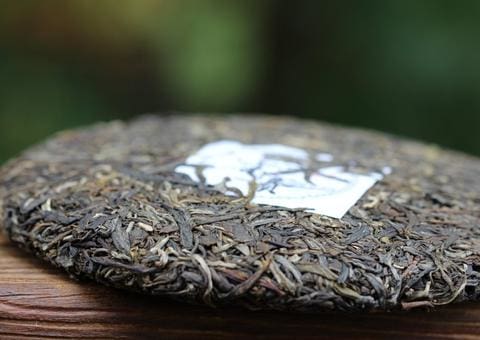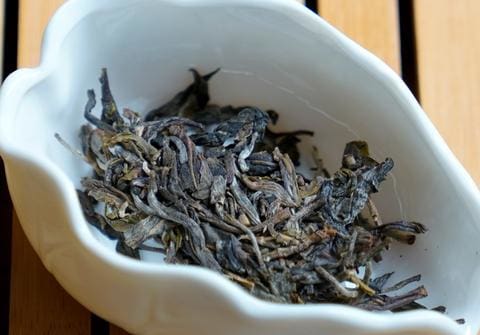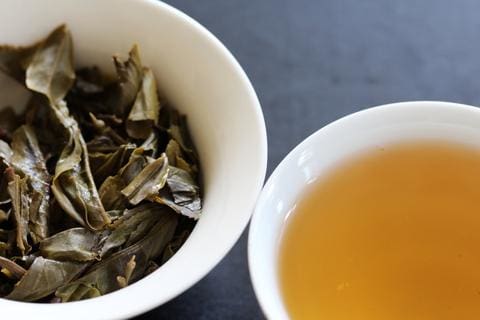
Enjoying the Process: The Four Stages of Pu’erh Tea Tasting
Pu’erhs are one of the most complex kinds of teas out there, and with that complexity comes tremendous joy that tea drinkers can expect over a testing session.

Unfortunately, many novice tea drinkers make the mistake of assuming their pu’erhs should be treated like all their other teas – steeped somewhere between one and four times. If you’re one of these tea drinkers, then you might just be missing out on some of the best flavors of your pu’erhs.
What do we mean?
Think of your dried pu’erh leaves as a kind of flower bud, such as a lotus. With enough care and water, the bud slowly begins to blossom open and bloom, revealing its enchanting colors and aromas. Like the lotus bud, every infusion of your pu’erh opens it up until it, too, eventually blooms with incredible flavor before it begins to slowly wilt away.
To help you better understand this idea, we want to introduce you to the four stages of pu’erh.
Stage One: The Opening

It may be tempting to associate this stage with the very first infusion, but pu’erh is a little different from other kinds of tea. While this initial stage begins with the 1st infusion, it usually lasts up through the 3rd or even 4th steeping, as it takes several full infusions for your pu’erh leaves to fully open and wake up.
Structurally, the pu’erh during this stage tends to have more floral notes, a thinner texture, and the color of the liquor is a little subdued. You should begin to notice, however, that the flavor from the first to the third infusion transitions from more intense floral aromatics with a faint hint of sweetness similar to a nectar.
Stage Two: The Bloom
If you persist with steeping your pu’erh beyond three infusions, you’ll be rewarded with some of the best flavors and aromas that your tea has to offer. The second stage, which tends to last from the 4th to the 7th infusion, marks a significant departure from the initial steeping.
During this stage, the texture of the pu’erh becomes a little thicker, almost brothy, and the color really begins to glow. With some of the good pu’erh teas, you might even discover that the floral notes are now complemented by a noticeable honey-like sweetness as well as the emergence of some rich, fruity aromas.
Although the flavors are unquestionably outstanding, the real magic of this stage might belong to the sensations. It’s these infusions that lead more experienced tasters to speak of a tea possessing the warmth of a cooking spice or creating some kind of pleasant vapor in the back of the throat. This is the best time to really breathe into your teas.
Stage Three: The Maturation
As the pu’erh continues to change with each steeping, you’ll notice the liquor take on an increasingly dark intensity. If the second stage marked the ascent to the peak, this third stage is just on the other side, beginning the descent but still offering an incredible view. This is when your tea has reached full maturity, and this character will continue up through around the 10th -12th infusion.
At this stage, the floral aromatics will begin fading away, leaving behind a bouquet of spices, fruits, and dark honey. Although lacking in the complexity of the second stage, the tea will still possess a nice, rounded taste with a full texture, almost dessert-like.

Stage Four: The Twilight
It’s important to remember that every tea has a different amount of stamina, and so will enter into the fourth stage earlier than others, beginning as early as the 10th infusion. No matter when it starts, you can identify this stage by the fact that your tea’s characteristics will finally begin to wane – the color lightens, the texture thins, the aromatics dwindle, and the flavors fade. Fortunately, this isn’t something that happens immediately; rather, this is a gradual process that many still find quite delightful, if even worthy of deep reflection and meditation on life.
The virtues of the tea at this stage is that you’ll find the texture quite smooth, the tea itself agreeable to nearly any palate. While the flavors still remain in a somewhat diminished state, it’s here where you may finally begin to taste a transition to more vegetal notes, like sugar-snap peas or cruciferous greens.
Some teas during this stage quickly run out of stamina, lasting maybe only a few infusions; others can surprise, carrying onward just north of the 20th infusion. Discovering exactly when your tea reaches that point can prove to be a rewarding journey in and of itself, one that still promises plenty of noteworthy, enjoyable sips.
If you never realized just how far a pu’erh can take you before today, we hope this topic encourages you to explore some new tasting territory.
